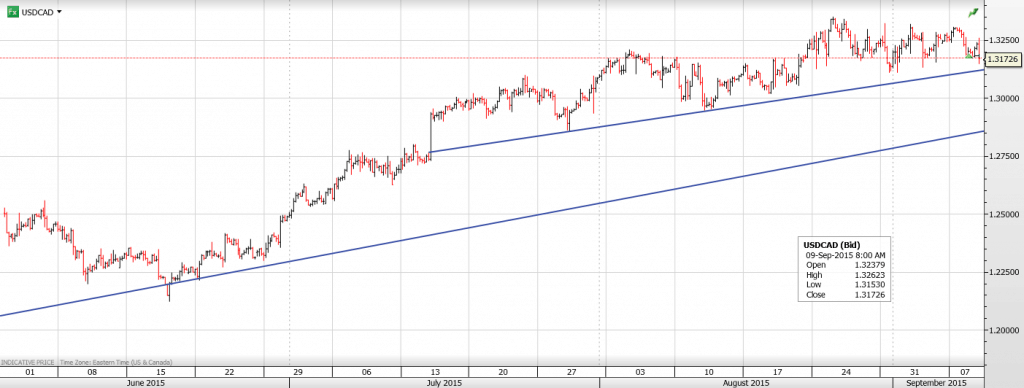USDCAD Range 1.3165-1.3260
USDCAD reversed gains following the release of a stronger-than expected housing report. August housing starts were 216,900 vs. expectations for 190,000 gain and Canadian dollar bulls jumped all over that data. USDCAD rapidly retreated to 1.3180 from 1.3260 before reversing that entire move into the Bank of Canada statement. That move proved wrong. USDCAD plunged down to 1.3165 on the statement, which many believe to be more hawkish than doveish.
That may not be entirely the case. The BoC expressed concern about growth prospects for China and other emerging market economies and credited a weak Canadian dollar for helping the domestic economy adjust to lower commodity prices. Another rate cut would go a long way in ensuring a weak Canadian dollar facilitates domestic growth and the former head of the Export Development Corporation is well aware of that fact.
Overnight, the Nikkei soared, gaining 7.7%, due to a combination of short sellers getting squeezed, renewed hopes that the FOMC would delay hiking rates and a vague promise of additional stimulation from China. That news helped USDJPY rally to 120.74.
European equity indices are all higher as are US equities. EURUSD edged lower while GBPUSD sank. Poor UK data was behind the sterling move lower.
Technical Outlook
The intraday USDCAD technicals are bearish following the break of support in the 1.3170-80 zone although more support is at 1.3140. A break of this level targets further weakness to strong support in the 1.3100-10 area. 1.3110 represents the trend line following the July 15 Bank of Canada rate cut and also horizontal support from the end of August. A break of 1.3100 argues for a steeper fall to the 1.2950-1.3000 area. Only a recover above 1.3270 would negate the downward pressure.
Today’s Range 1.3140-1.3220
Chart: USDCAD 4 hour with trendlines






